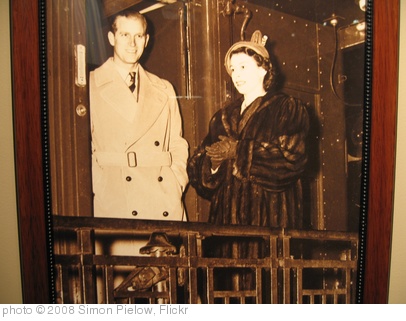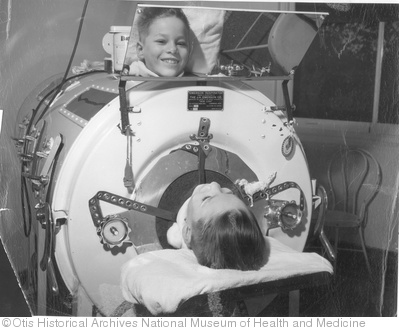The National Book Award was given to From Here to Eternity by James Jones.
 The Caine Mutiny by Hermann Wouk won the Pulitzer Prize for Fiction. I read The Caine Mutiny back when I was a teenager, and I remember where I was when I read it: Glorieta, New Mexico at a camp for Christian young ladies. (We were called Acteens, a very 1970’s title for a missions organization for girls.) Anyway, the camp itself and the subject matter in the book were enough of a contrast that I remember the experience of reading it quite well. In my cabin at a camp full of teen girls, during afternoon rest and recreation (recreation for me was reading), I was reading about a bunch of men on a ship and how they eventually relieve Captain Queeg of his command on the basis of the men’s belief that he is mentally unbalanced. I’ve never seen the movie based on The Caine Mutiny. Have you?
The Caine Mutiny by Hermann Wouk won the Pulitzer Prize for Fiction. I read The Caine Mutiny back when I was a teenager, and I remember where I was when I read it: Glorieta, New Mexico at a camp for Christian young ladies. (We were called Acteens, a very 1970’s title for a missions organization for girls.) Anyway, the camp itself and the subject matter in the book were enough of a contrast that I remember the experience of reading it quite well. In my cabin at a camp full of teen girls, during afternoon rest and recreation (recreation for me was reading), I was reading about a bunch of men on a ship and how they eventually relieve Captain Queeg of his command on the basis of the men’s belief that he is mentally unbalanced. I’ve never seen the movie based on The Caine Mutiny. Have you?
Newbery Medal for children’s literature: Ginger Pye by Eleanor Estes.
Carnegie Medal for children’s literature: The Borrowers by Mary Norton. I love The Borrowers. I need to read it to Z-baby if we ever finish reading The Lord of the Rings. (I love LOTR, too, but it is very long.)
Published in 1952:
Mrs McGinty’s Dead and They Do It With Mirrors by Agatha Christie. I think Mrs. McGinty was one of the first Agatha Christie mysteries I read, and I remember it well, including whodunnit. I must admit that I can often re-read many of her other novels with pleasure because my ailing memory doesn’t remind me who the murder is.
The Silver Chalice by Thomas B. Costain. Historical fiction set during the time of Christ.
Giant by Edna Ferber. Ferber’s fun, but highly inaccurate, novel of Texas. I grew up around ranchers and oil men, and although some Texans truly are “bigger than life” (and too big for their britches), Giant goes just a little too far with all the high-flying and high-rolling Texas millionaires. I really wonder if Ms. Ferber had ever been to Texas and if not, where she got her information about the culture of the state. She was a New Yorker as and adult, and she was a member of the Algonquin Round Table, a group of wits who met for lunch every day at the Algonquin Hotel in New York. Giant was made into a 1956 movie starring Elizabeth Taylor, James Dean, and Rock Hudson. It’s a good story if you don’t take its portrayal of Texas too seriously.
The Old Man and the Sea by Ernest Hemingway. I can take, and even appreciate, some Hemingway, but this story of an old man and a boy catching a fish seemed long even at only a little over a hundred pages.
 The Voyage of the Dawn Treader by C.S. Lewis. Such a fun book, and it has about the best opening sentence in children’s literature: “There was once a boy named Eustace Clarence Scrubb, and he almost deserved it.†In this book, Lewis does a riff on the Odyssey as Caspian, Edward, Lucy and cousin Eustace voyage on The Dawn Treader looking for the seven lost Lords of Narnia and for the End of the World. This chronicle also has the best transformation as Eustace becomes a dragon, repents of his whining, greedy, lazy ways, and is restored by Aslan to his human form, albeit a much nicer person than when he started out on the journey.
The Voyage of the Dawn Treader by C.S. Lewis. Such a fun book, and it has about the best opening sentence in children’s literature: “There was once a boy named Eustace Clarence Scrubb, and he almost deserved it.†In this book, Lewis does a riff on the Odyssey as Caspian, Edward, Lucy and cousin Eustace voyage on The Dawn Treader looking for the seven lost Lords of Narnia and for the End of the World. This chronicle also has the best transformation as Eustace becomes a dragon, repents of his whining, greedy, lazy ways, and is restored by Aslan to his human form, albeit a much nicer person than when he started out on the journey.
Excellent Women by Barbara Pym. I found the book, Excellent Women, to be reminiscent of Jane Austen (drolly observant), Mrs. Gaskell’s Cranford (insightful in regard to the ordinary), and even Jane Eyre, without the drama, but with the wry self-analysis. Semicolon review here.
East of Eden by John Steinbeck. If I have to choose between Steinbeck and Hemingway, I’ll take Hemingway.
Prisoner’s Base and Triple Jeopardy by Rex Stout. Prisoner’s Base is sad in that a sympathetic character gets killed off in the beginning, but it’s good solid Nero Wolfe tale. Triple Jeopardy is one of Stout’s collections of long short stories or short novelettes, and as such it doesn’t interest me as much as the full-length books do. But I’ll read, and expect to enjoy, anything Mr. Stout wrote about Nero Wolfe and his sidekick Archie Goodwin.
Charlotte’s Web by E.B. White. “Wilbur never forgot Charlotte. Although he loved her children and grandchildren dearly, none of the new spiders ever quite took her place in his heart. She was in a class by herself. It is not often that someone comes along who is a true friend and a good writer. Charlotte was both.â€




